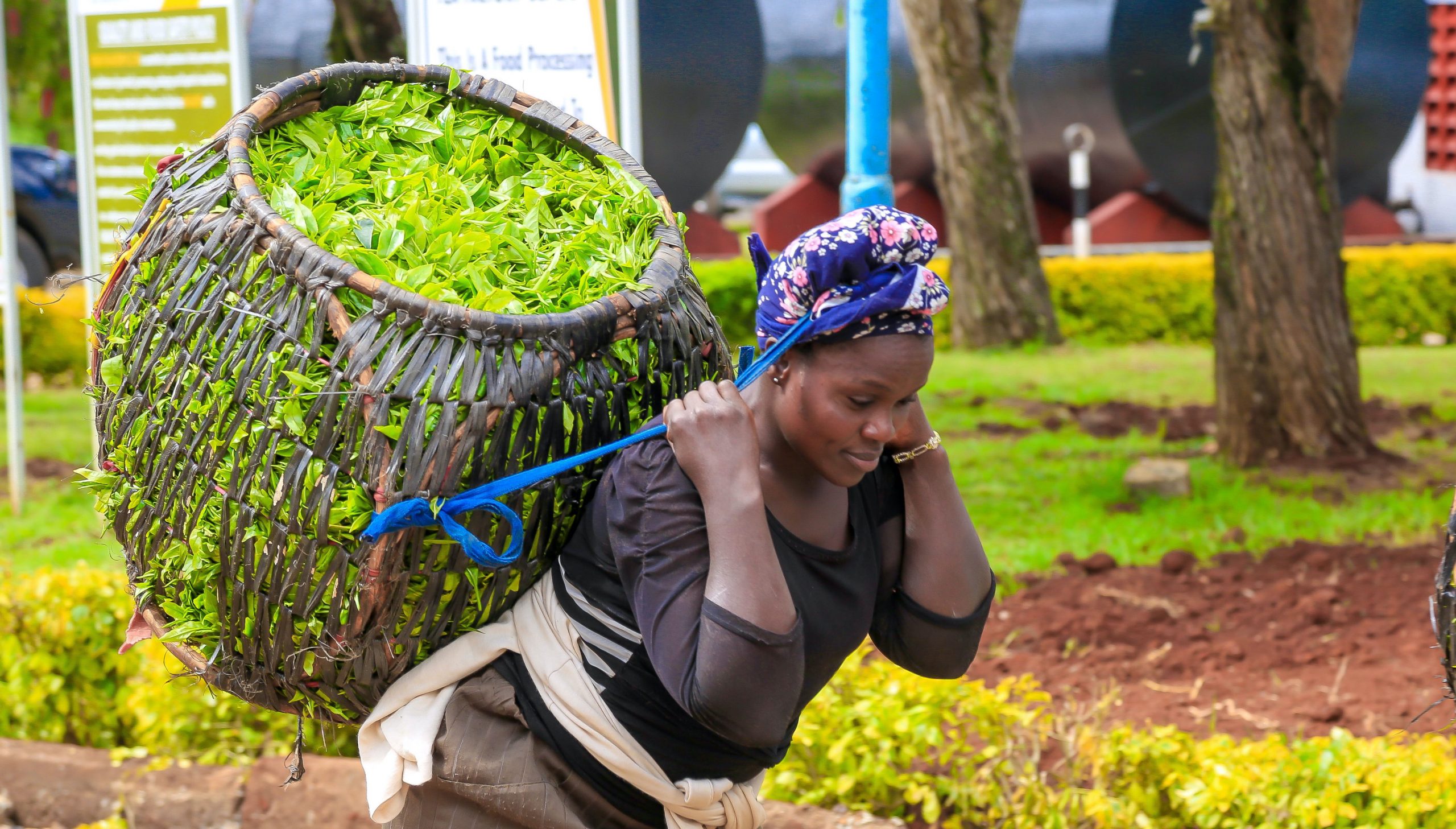By Bonface Munene and Abraham Wanjiku
The tea sector is of great importance to Kenya’s economy. In 2019, the sector accounted for 25 percent of the total foreign earnings and 1.5 percent of the country’s Gross Domestic Product (GDP).
The high contribution to GDP is mainly attributed to increase in the amount of tea produced and exported to the international market.
In Kenya, the success story in terms of high tea production is as a result of three main factors.
The first one is the government policy formulated after independence that focused on integrating small scale growers into the mainstream of tea growing.
It is estimated that small scale tea under the umbrella of the Kenya Tea Development Agency (KTDA) produces about 60 percent of the total tea.
The remaining 40 percent is by the multinational sector and large-scale growers.
The second factor behind the success story of tea in the country is the establishment of an efficient estate sector under British tea companies.
This was important in bringing a revolutionary management system in the sector, which resulted to a five-fold increase in output.
The third factor is the selection of high-yielding varieties mainly by the Tea Research Foundation of Kenya (TRFK), and the selective application of herbicides and improved planting and cultivation methods.
These three factors have had tremendous effects on the amount of tea produced in the country.
Despite the favourable environment that contributed to the success of the sector, other factors have negatively affected its performance over time. One of the major challenges has been fluctuating tea prices at the auction market, with most of the time registering a decline over the last few years.

The only period when the auction prices rose significantly was in the period between December 2014 and July 2015.
During this period, the tea auction prices registered an 89.01 percent increase.
In the period between July 2015 and April 2016, prices declined by 37.78 percent as a result of increased supply in the global market.
Similarly, the period between January 2018 and March 2019 registered a 29.70 percent reduction in tea auction prices.
The declining trend in tea prices is a risk factor to the farmers who in most cases earn low returns despite the capital and human investment in terms of money, time and effort that goes into production of tea.
Several factors, both local and global, have contributed to the fluctuations, with most of the time a downward trend in the returns from the market.
Reduced Production Due to Variable Climatic Condition

Production of Kenya’s tea has been rising, though this trend has not been consistent between 2014 and 2019.
Production declined sharply by 65.19 per cent between December 2014 and March 2015 before rising to record 50 million MT in January 2016.
The sharp decline in production was due to unfavourable cold weather between June and August during the period under consideration.
In the period between February 2017 and December 2018, production of tea increased, on average. This increase could be attributed to favourable weather conditions where the country received adequate rainfall in the said period.
A sharp decline from the December 2018 to March 2019 was as a result of low production in tea growing regions, specifically West of Rift Valley. However, production in East of Rift Valley declined as well.
Read>>>> KTDA Setting Up Africa’s First Japanese Green Tea Production Factory
Generally, cumulative production for the first five months from January to May 2019 was 9.8 percent lower than a corresponding period in 2018. This could be attributed to severe and hot dry weather conditions, and late-onset of the long rains leading to depressed rainfall.
Kenya is ranked third in tea production after China and India, and number one exporter of black tea in the world market.
Demand Factor Due to Political Turmoil in Leading Importers
The top ten importers of Kenya’s tea include Pakistan, Egypt, UK, UAE, Sudan, Russia, Yemen, Afghanistan, Kazakhstan, and Poland.

These countries consume approximately 88 per cent of Kenya’s total tea exports. This means that a slight decline in the consumption of Kenya’s tea by any of the top ten consumers would significantly reduce the returns from tea exports.
Over time, Pakistan has been a major market for Kenya’s tea, consuming up to 38 per cent of the total tea exports.
The quantity of tea exported to Pakistan has been increasing consistently from 105 million MT to 178 million MT between 2014 and 2018, respectively.
In the same period, the proceeds received from the sale of Kenya’s tea increased consistently from Ksh 21.3 billion in 2014 to Ksh 56.3 billion in 2018.
However, in October 2019, Pakistan’s demand for tea declined by an average of 7 percent. This was attributed to currency devaluation in the country after facing an economic crisis that forced it to seek a bailout from the International Monetary Fund (IMF).
In the case of Egypt, the quantity imported from Kenya has not been consistent between the period under consideration.
This could be because Egypt has been facing several challenges, including political and economic instabilities.
The highest quantity imported was 102 million MT in 2014, earning Ksh 21 billion. However, by mid-2018, the export volume had declined to 74 million MT, earning Ksh19 billion.
Similarly, exports to the United Kingdom (UK), the third-largest importer of Kenya’s tea, declined over the same period from 53 million MT earning Ksh 9.9 billion in 2014 to 47 million MT earning Ksh 12.4 billion in 2018.
This decline is partly attributed to the uncertainties surrounding Brexit. Further, the bulk of Kenya’s tea found its way into the European market through the UK.
In Case You Missed It>>>> Tea Prices Tick Up by 30% Amid Low Global Supplies
Therefore, with Brexit, it means that Kenya has to negotiate with individual countries and the UK to allow her tea to access the market.
The other countries in the top ten importers of Kenya’s tea have been witnessing similar trends of fluctuations in the quantity imported, for instance due to the political crisis witnessed in Sudan, and the US and EU sanctions imposed on Russia in 2014 following tensions in Ukraine.
In the Middle East, there has also been a decline in the amount of tea import by the UAE, Yemen, Afghanistan, and Kazakhstan since 2014 due to political instability.
Competition From Other Markets
Kenya is also facing competition from other countries such as Sri lanka. About 90 per cent of Kenya’s tea is exported in raw form and mostly used to blend other tea.
As a result, Kenya’s tea prices could also be declining due to the buyer’s preference for value-added tea from other countries.
A good example of a country exporting value-added tea is Sri-lanka. In 2018, Kenya exported 476 million kilograms of tea, earning Ksh140 billion.
Sri Lanka, on the other hand, exported 288 million kilograms (equivalent to 60 percent of total exports in 2018) and earning Ksh150 billion.
Sri Lanka is among the countries in the world that have invested heavily in value added tea, and as a result their product fetches higher prices in the international market.
For this reason, there are some lessons that Kenya can learn from Sri Lanka as far as value addition of tea is concerned.
Sri Lanka exports more than 50 per cent of its tea in value added form. The country has a policy to value add its tea products in various forms such as flavored tea, organic tea, iced tea and many others.
Recently, the country introduced tea-based soaps, shampoo and other products that attract higher prices in the international market.
To further enhance performance of the sub-sector, Sri Lanka has invested heavily in research. Currently, the country houses the biggest tea research institute in the world.
The institute deals exclusively with matters of value addition. This is an indication that Sri Lanka’s investment in research and value addition of exported tea has contributed significantly to her bargaining power for better prices in international markets.
Conclusion
In summary, there are three main factors that have contributed to decline in earnings from Kenyan tea.
These are inconsistency in local production as a result of variable climatic conditions, the decline in demand of Kenya’s tea due to political and economic instabilities in top consumer countries as well as stiff competition from other exporters in the world market such as Sri Lanka.
There is no guarantee that the earnings will not decline even further bearing in mind that there are several dynamics in the world markets.
In fact, there is a possibility of the situation even worsening if the country will not adopt certain trends in the world market, such as value addition and aggressive marketing strategies to remain competitive.
As such, there is need to look for alternative new markets for Kenya’s tea. This can be done by developing a marketing strategy for the product and negotiating with potential tea consuming countries.
Further, competition from other markets can be addressed through innovations and value addition to improve the quality of Kenyan tea.
This will enable Kenya to compete with other tea producing countries in the world market, such as Sri lanka, among others.
Packed value-added tea fetches higher prices and therefore higher earnings compared to that sold in bulk boxes in the international market.
In addition, Kenya can introduce a policy to ensure most of her tea is value-added before export. This includes adding flavor and packaging it into teabags before exporting to other markets rather than selling it in bulk boxes.
To achieve the proposed quality enhancement of Kenya’s tea, legislation needs to be put in place to control the quality of tea being produced in the country.
This can be done through strengthening the regulatory bodies dealing with production and control of the tea sector.
For example, there is a Bill awaiting discussion and passage by Parliament.
The Tea Bill 2018 aims at strengthening the Tea Board of Kenya to deal with issues of providing advisory services on tea production and quality enhancement.
The bill is also designed to regulate the way tea will be exported to ensure that it fetches the best price for the farmers and hence higher earnings.












Leave a comment